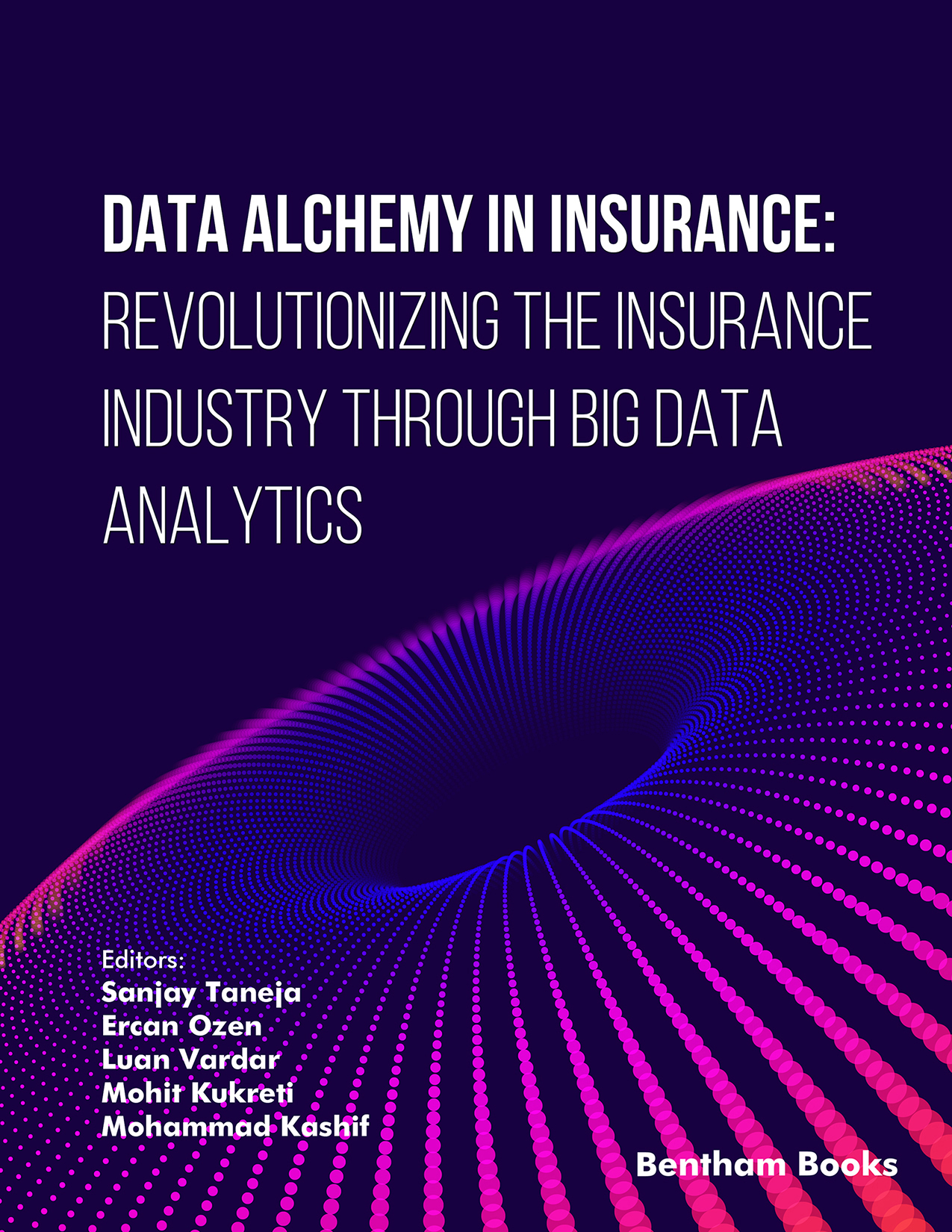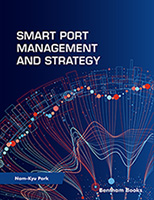In the dynamic landscape of the 21st century, industries across the globe are experiencing unprecedented transformations, fueled by technological advancements that redefine the way we conduct business. Among these industries, the insurance sector stands at the forefront of change, undergoing a revolutionary evolution driven by the transformative power of Big Data Analytics.
“Data Alchemy in Insurance: Revolutionizing the Insurance Industry through Big Data Analytics” is a comprehensive exploration into the profound impact of data analytics on the insurance landscape. As we navigate through an era defined by data-driven decision-making, this book serves as a beacon, shedding light on the pivotal role that Big Data plays in reshaping the fundamental pillars of the insurance industry.
The integration of Big Data Analytics into insurance operations is not merely a trend but a necessity, as insurers strive to remain competitive, adaptive, and responsive to the ever-shifting demands of the market. This book delves into the intricate ways in which data analytics is reshaping risk assessment, customer engagement, underwriting processes, and claims management within the insurance ecosystem.
Through insightful case studies, expert analyses, and real-world examples, this book aims to demystify the complexities surrounding Big Data Analytics for readers from various backgrounds – be it industry professionals seeking to enhance their practices, scholars delving into the realms of InsurTech, or enthusiasts eager to understand the technological underpinnings of the insurance revolution.
As we embark on this journey through the pages of “Data Alchemy in Insurance: Revolutionizing the Insurance Industry through Big Data Analytics” readers will gain valuable insights into the challenges and opportunities that arise at the intersection of insurance and data. The chapters within this book are crafted to provide a holistic perspective on the ongoing transformation, offering a roadmap for industry stakeholders to navigate the evolving landscape with confidence and foresight.
It is our sincere hope that this book becomes a trusted companion for those seeking to unravel the mysteries of Big Data Analytics in the insurance sector. As we witness the revolution unfold, let this preface serve as an invitation to explore the future of insurance – a future where data is not just a commodity but the driving force behind a more resilient, efficient, and customer-centric industry. Following are the abstracts of the chapters included in this book:
Chapter 1
In the realm of motor insurance, customer retention has become a critical focus for companies, given the high cost of acquiring new customers. This study proposes a machine learning model to predict customer churn in the motor insurance sector. The objective is to develop a high-accuracy prediction model, identify significant factors for customer attrition, and create customer segments using machine learning algorithms. The literature review highlights the challenges faced by motor insurance providers, such as annual policy renewals and intense competition. Existing research emphasizes the importance of predicting customer churn to improve service quality and gain new users. Various methods, including under-sampling and neural network models, have been explored to address the issue. The study utilizes a hybrid classifier, GWO-KELM, to predict churn and evaluates its performance through confusion matrices and ROC curve analysis. The results demonstrate the algorithm's ability to characterize test data and its overall accuracy. Data processing involves the Expectation Maximization technique, enhancing decision-making transparency and outcomes.
Chapter 2
In the changing corporate landscape, the combination of Artificial Intelligence (AI) and data analytics has altered the insurance industry, resulting in a customer-centric paradigm through data-driven operations. AI-powered data analytics plays a critical role in helping clients understand, engage with, and select insurance services. This chapter delves into the detailed uses of AI-powered data analytics in the insurance sector, including AI assessment, problems, and ramifications, with a particular emphasis on product customization. The goal is to demonstrate how AI-powered data analytics is altering the industry, meeting customer requests, and investigating disruptive implications. The process entails analyzing secondary sources such as research publications and industry reports to better comprehend the impact on customer choices and service provider tactics. Findings reveal a notable shift in the insurance landscape, emphasizing AI-powered data analytics' profound impact on personalized experiences, data-driven insights, risk assessment, claims processing, premium decisions, and policy customization. This technological evolution signifies a significant transformation in the insurance sector.
Chapter 3
Robo Advisors are ushering in a new era of automated health guardianship, which is ushering in a new era of automated health guardianship in the ever-evolving environment of healthcare, which has seen an explosion in the integration of technology. This article goes into the paradigm change brought about by these sophisticated algorithms in the field of insurance planning, specifically with regard to health coverage. The purpose of this paper is to investigate the revolutionary effect that Robo Advisors have had on the process of insurance planning. Specifically, the article will shed light on the functionalities of Robo Advisors as well as the consequences that these features have for consumers as well as the insurance sector. Additionally, the ethical and regulatory considerations that surround the use of Robo Advisors in insurance planning are covered in this article. Concerns around data privacy, bias mitigation, and openness in algorithmic capabilities become critical as the use of artificial intelligence in decision-making processes becomes more widespread. Also, the changing role of insurance experts in connection with Robo Advisors is investigated in this article. Although these automated technologies simplify and improve the decision-making process, there is still no substitute for the human element when it comes to reading preferences down to the most detailed level and offering individualized guidance.
Chapter 4
Insurance is a healing ointment for every person, but it’s better to go for insurance as a shock absorber for different types of shock in life.
People also take insurance to plan their lives, which helps them reduce tensions throughout life, but so many people also try to avoid taking insurance due to the long time and time-consuming operational procedures at various stages of their insured life. They need an assistant to reduce or resolve the operational problems related to buying policy, claim filing, and renewal of the policy. Traditional practices to resolve issues related to such problems include interaction with men either in the form of physical meetings or by communication through emails and telephones. The advent of the 21st century is the growth of automation in businesses, and the insurance industry is also adopting technology to reduce the issues related to claim settlement policy selling and understanding consumer behavior, which assists in policy selling. This chapter will visualize the growth of technology in the Indian insurance industry.
Chapter 5
The post-COVID era has accelerated the growth of the health insurance sector drastically. Nowadays, the public is focussing on taking health insurance to mitigate the sudden expenses of health services. However, finding the best health scheme for people is still considered challenging. Hence, the present study attempts to solve the issue by developing a framework that considers a range of essential factors of the health insurance plan. The identified factors were ranked by using the integrated Delphi and best-worst methods. The study helps consumers choose their policy effectively using the proposed framework.
Chapter 6
The landscape of the insurance industry is undergoing a profound transformation propelled by the integration of advanced data analytics. This paper explores the evolving role of data analytics in reshaping critical aspects of insurance, ranging from traditional risk assessment to customer-centric practices. Against the backdrop of exponential data growth and technological advancements, insurers are increasingly relying on analytics to inform strategic decision-making, enhance risk modeling, and optimize customer engagement. The abstract provides a concise summary of the primary themes covered in this paper, underscoring the pivotal role of data analytics in navigating the challenges and leveraging the opportunities that lie ahead for the insurance sector. The exploration encompasses current trends, technological advancements, ethical considerations, and regulatory landscapes, aiming to provide a comprehensive understanding of the dynamic future that awaits the intersection of data analytics and insurance.
Chapter 7
After the e-tail and the e-travel industries, the insurance industry has likewise begun its computerized development in India. The Web aggregators have reformed the web-based insurance industry under the permit of the Insurance Regulatory and Development Authority of India. There are currently around 16 authorized web aggregators in India, and some of them have moved forward to try and do online deals with their imperative licenses. Indeed, even insurance organizations have begun to sell online through their immediate channels, yet not all arrangements are suitable for online transactions. The insurance renewal business gradually moves onto the digital platform with basic ECS and auto-debit mandates, even for offline policies. The Boston Consulting Group report anticipates an extreme development in renewals. The organization benefits more because the specialist payout goes down fundamentally, and the operational costs of writing and giving the policy are not there. The online insurance industry is quickly rising, and just 30% of the insurance purchasers in India are non-digitalized, and that number is quickly diminishing, as per the BCG examination. The digitalization of the insurance industry speeds up development and brings down costs. The cost of sales and dispersion of insurance products in India through absolutely advanced channels is close to one-sixth that of physical channels. The computerized impact on insurance sales is growing, with pre- and post-deal advanced impact playing a significant role. E-insurance is quickly catching up to e-wallets and internet banking, which are now well-established trends. The present paper aims to study the growth of life insurance in India and its challenges. The present paper found that the growth of the private sector life insurance company has continuously increased compared to the public life insurance companies in India.
Chapter 8
This study critically examines the multifaceted impact of artificial intelligence (AI) on contemporary societal dynamics. Exploring economic, social, ethical, and cultural dimensions, our research sheds light on the unprecedented opportunities and challenges that accompany the rapid integration of AI technologies. Assessing the transformative potential of AI in diverse industries, we delve into economic implications, highlighting efficiency gains and innovation. Socially, we investigate evolving employment patterns, educational paradigms, and interpersonal relationships shaped by AI. Ethical considerations, including algorithmic bias and transparency, are scrutinized. Additionally, we explore how cultural factors influence AI perceptions and adaptation. This interdisciplinary analysis aims to provide a nuanced understanding of the intricate relationship between AI and society, offering insights for responsible AI development, policy-making, and fostering a harmonious coexistence in the evolving technological landscape.
Chapter 9
This study intricately explores the ethical landscape surrounding data analytics within the insurance sector, aiming to untangle the intricacies and quandaries arising in the pursuit of data-driven insights. In an era dominated by technological strides, the insurance industry increasingly relies on data analytics to bolster risk assessment, optimize operations, and tailor services to individual needs. However, the widespread use of data introduces ethical challenges pertaining to privacy, equity, and openness. The principal objective of this research is to traverse and critically examine the ethical considerations woven into the fabric of applying data analytics within the insurance sector. To accomplish this, a methodology centered on the case study is employed, delving into the real-world scenario and their practical implication. By closely analyzing specific instances within the insurance industry, the research aims to provide a nuanced comprehension of how ethical concerns manifest during the implementation of data analytics. The methodology encompasses the selection of diverse case studies representing various aspects of data analytics in insurance, encompassing customer profiling, risk assessment algorithms, and claims processing. Through a thorough analysis of these cases, the study seeks to uncover patterns, confront challenges, and propose potential solutions related to ethical considerations. Ethical frameworks, industry guidelines, and stakeholder perspectives will be leveraged to assess the ramifications of data analytics practices in the insurance domain. In conclusion, this research adds to the ongoing dialogue on responsible data analytics in the insurance sector. By unraveling the ethical tapestry and offering insights gleaned from real-world cases, the study aspires to present actionable recommendations for industry professionals, policymakers, and stakeholders to navigate the ethical quandaries associated with data analytics in insurance responsibly.
Chapter 10
In this article, we explore the emerging trend of integrating health insurance data into life insurance policies in the Indian context. This innovative approach aims to revolutionize risk management in India's rapidly evolving insurance sector. By leveraging detailed health data, insurance providers can offer more accurate risk assessments, leading to tailored insurance products that better meet the diverse needs of the Indian populace. However, this integration raises critical issues around data privacy, regulatory compliance, and infrastructural challenges, especially in rural areas. We will analyze the potential benefits, such as enhanced risk prediction and promotion of healthier lifestyles, against these challenges, drawing insights from early adopters and regulatory guidelines from IRDAI. The article aims to provide a comprehensive overview of this integration's impact on India's insurance landscape.
Chapter 11
In India, LIC of India is the one and only public insurance company that introduced micro-insurance (MI) policies with effect from 28th September 2006. This study has made an attempt to examine the micro-insurance schemes and distribution channels of LIC of India, the growth and development of the microinsurance business, and the claims and settlements of LIC of India. The LIC of India micro insurance agents gradually increased, maturity claims were more than the total death claims, and the number of microinsurance policies continuously increased. Later, the number of policies had fallen down drastically. This study concluded that the LIC of India should conduct revival campaigns in both rural and urban areas and create more awareness of revival campaigns among the existing micro insurance policyholders for developing business and reducing lapsation.
Chapter 12
Life insurance provides financial security to families in case of the unfortunate death of the policyholder. In this chapter, a bibliometric analysis of 144 papers published between 1973 and 2022 in the Scopus database was performed to identify key themes and trends in the literature on Life Insurance. The analysis included citation analysis for leading countries, organizations, and authors. It was found that there has been significant growth in research on Life Insurance since 2019, the duration of covid 19. Three dominant themes were identified: customer satisfaction with insurance, the efficiency of insurance, and the relationship between economic growth and insurance. This chapter provides important insights for Life Insurance companies and other stakeholders to promote life insurance growth in India.
Chapter 13
The current study delves into the advancing field of robo-advisors, an evolving business model revolutionizing investment advisory services through full automation. Examining 299 research papers from the Scopus database, spanning from 2002 to January 2024, this study employs bibliometric analysis to uncover key research topics, annual publication trends, subject areas, leading countries, geographic distribution, and co-occurrence and citation network of this scientific exploration. The keywords applied to the study were “robo-advising” OR “robo-advisors” OR “smart wealth management” OR “artificial intelligence in finance”. The data were subjected to analysis using the VOSviewer tool, and the 299 selected papers were examined through descriptive, tabular, and visual presentations within the framework discussion. The results indicated that the concept of robo-advising has evolved as an emerging concept in relation to smart wealth management from 2016 onwards. The United States has emerged as the leading country in contributing the maximum number of publications to this concept, and the subject area is computer science. Furthermore, there is a limited exploration of the concept of robo-advising and sustainability as the authors found nil manuscripts for the two together. Finally, at the end of the research, limitations, and suggestions are stated regarding the need for integrated research efforts on this subject.
Chapter 14
The radical shift observed in industries from physical to digital platforms has escalated the implications of data depositories. The extent to which data is growing is exponential. The insurance industry is no exception. The availability of data on various digital platforms has contributed to an enormous amount of repositories in a short span of time. The present study is focused on performance analysis of research constituents that contributed to the domain of insurance industry and big data. An analysis of 541 research publications from 2012 to 2023 retrieved from the WoS database from more than 2000 authors is performed using the bibliophily app, highlighting trends and contributions by authors, universities, and countries. The findings showed that big data has improved the process of database management and profiling in the insurance sector, further easing the claim process. This study will assist researchers and practitioners in understanding the past and present research trends in the area.
Chapter 15
This book chapter explores the profound impact of machine learning and robo-advisors on the insurance industry, ushering in a transformative era characterized by heightened efficiency and innovation. Through an in-depth analysis of their ascendance, we delve into how these technologies are revolutionizing traditional practices within the insurance sector. The utilization of machine learning algorithms is examined across various facets of the industry, including fraud detection, underwriting automation, claims processing optimization, and risk management through predictive analytics. Additionally, the integration of IoT, telematics, and other emerging technologies further amplifies the potential for enhanced customer experiences and streamlined operations. Ethical considerations, regulatory compliance, and the imperative need for explainable AI in decision-making processes are also addressed. The study underscores the collaborative efforts between insurers and InsurTech startups, illustrating how such partnerships leverage the power of machine learning to navigate and thrive in an evolving landscape. As the insurance industry undergoes this significant metamorphosis, the book chapter concludes by highlighting key trends and implications for the future trajectory of the sector.
Sanjay Taneja
Department of Management Studies
Graphic Era Deemed to be University
Dehradun, Uttarakhand, India
Ercan Ozen
Department of Banking and Finance
University of Usak, Usak, Turkey
Luan Vardar
University "Ukshin Hoti" Prizren
Kosovo (Serbia)
Mohit Kukreti
University of Technology and Applied Sciences
(CAS Ibri), OMAN
&
Mohammad Kashif
Department of Management Studies
Graphic Era Deemed to be University
Dehradun, Uttarakhand, India





